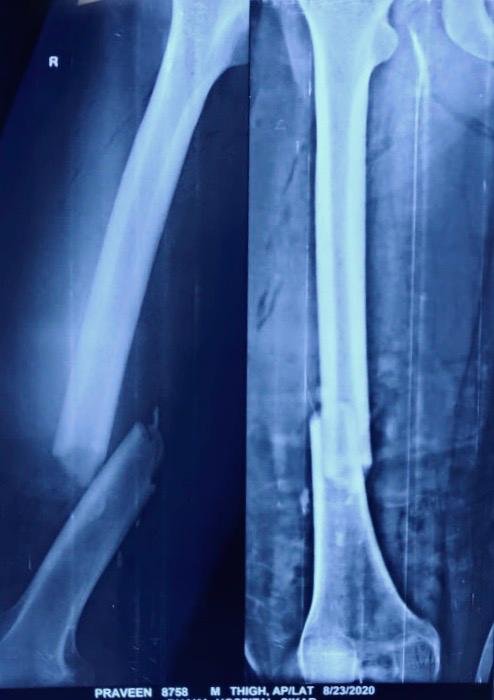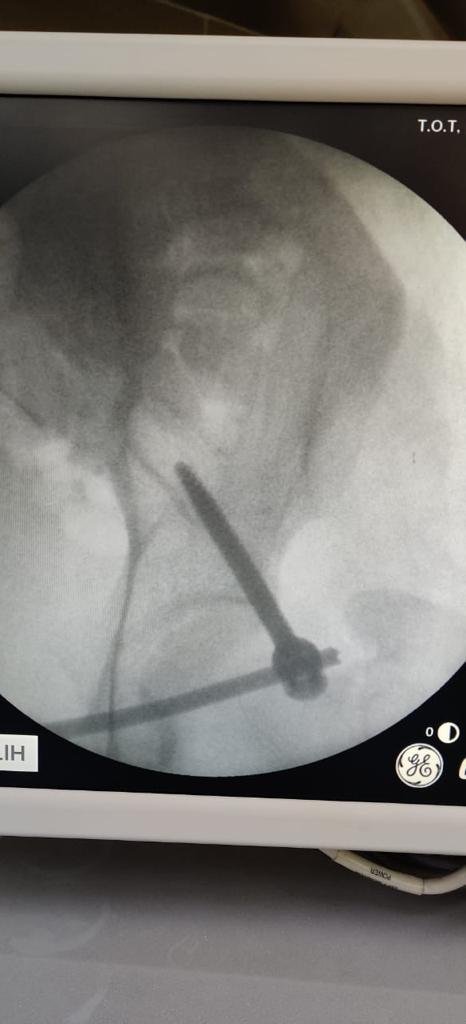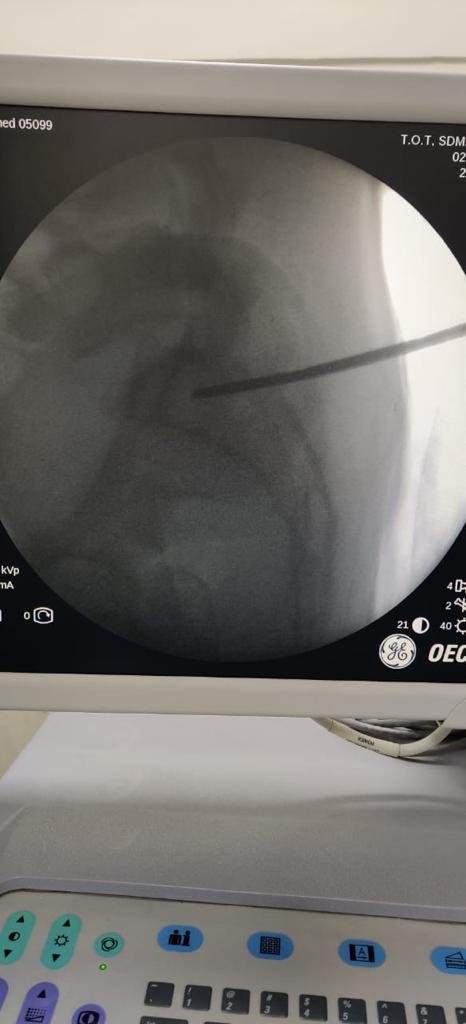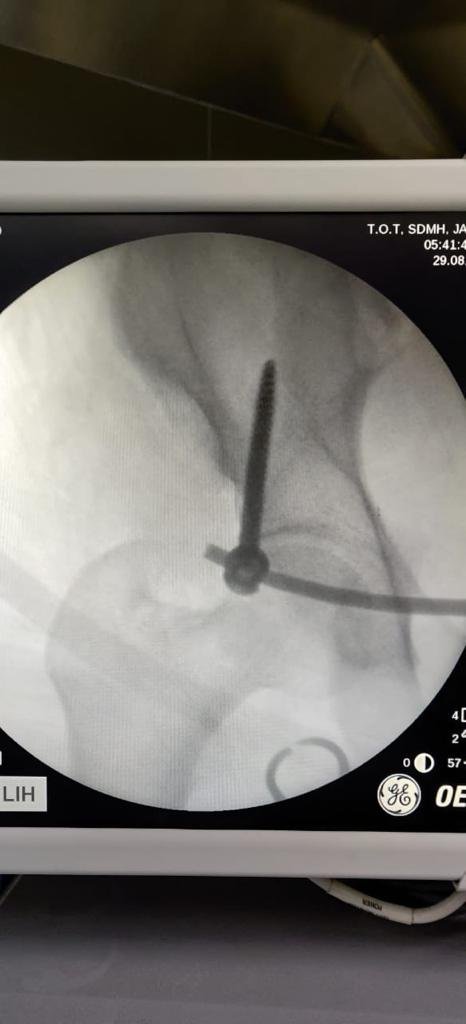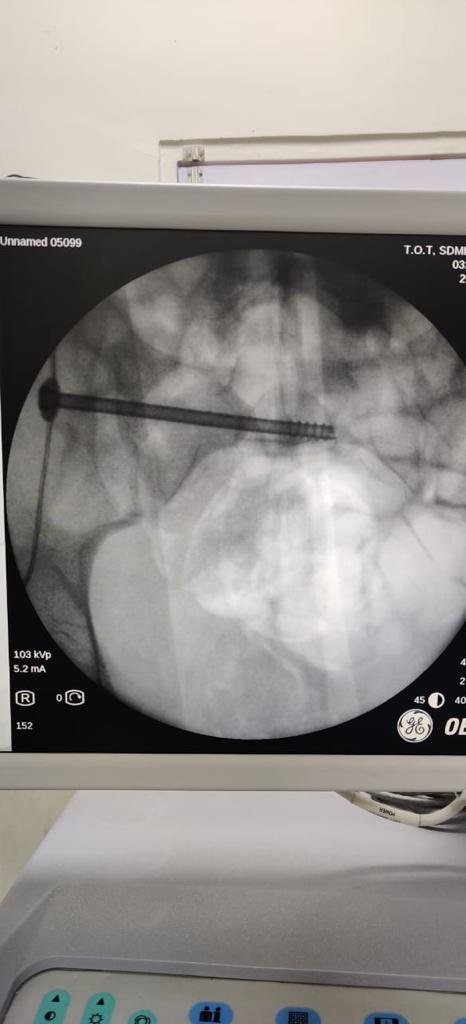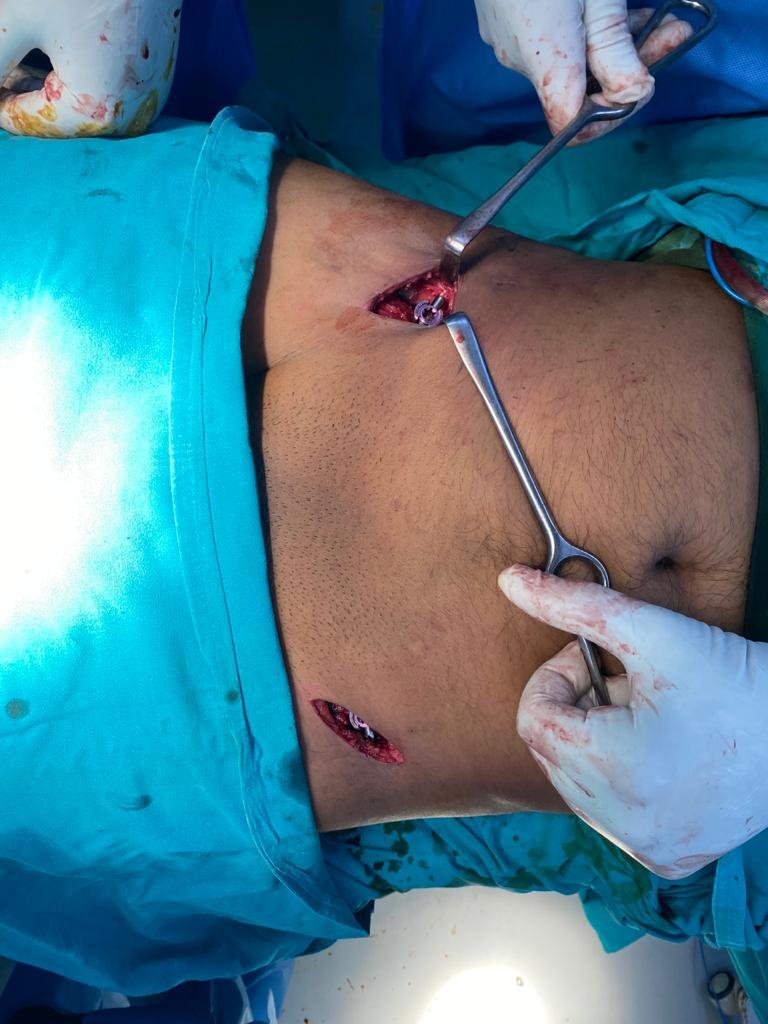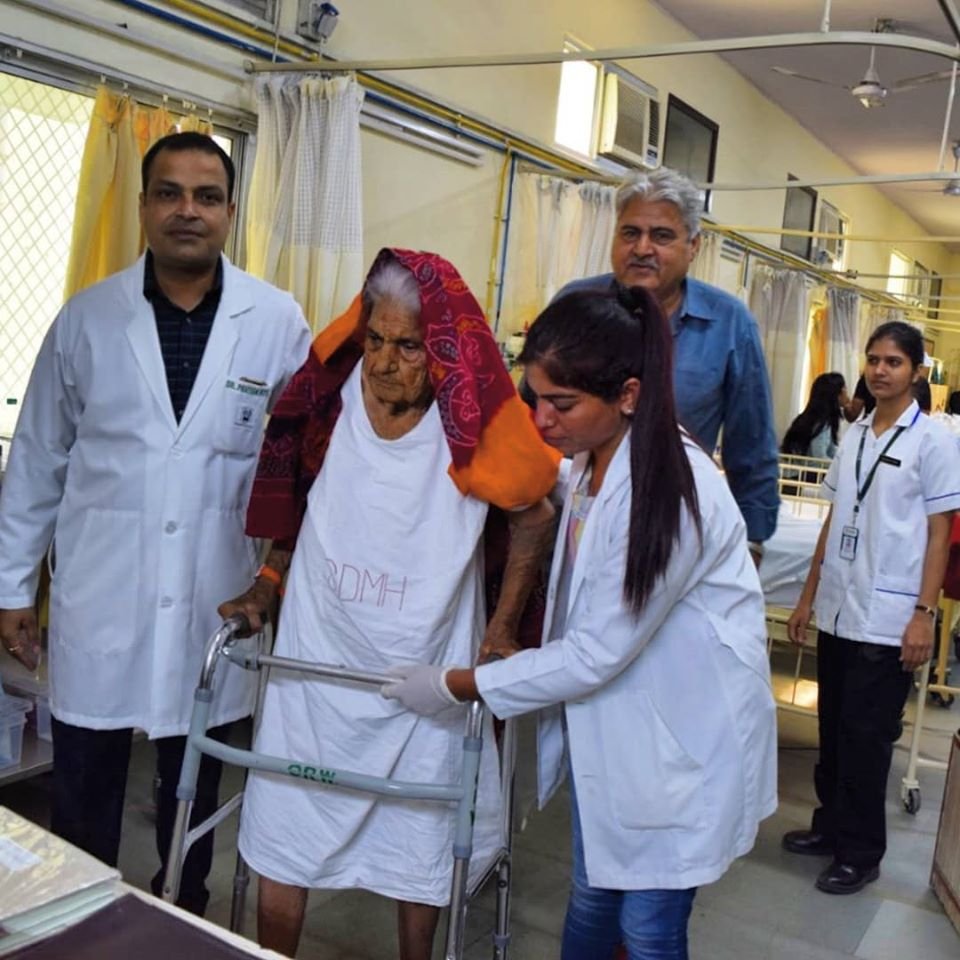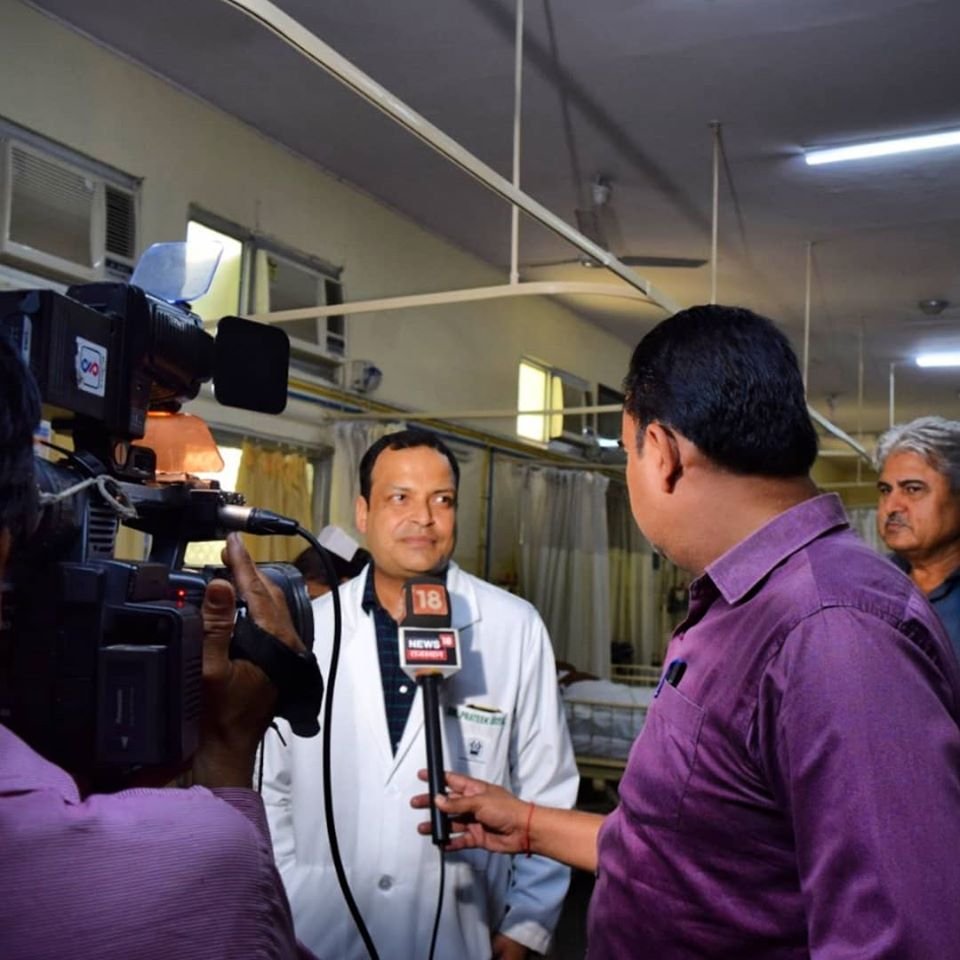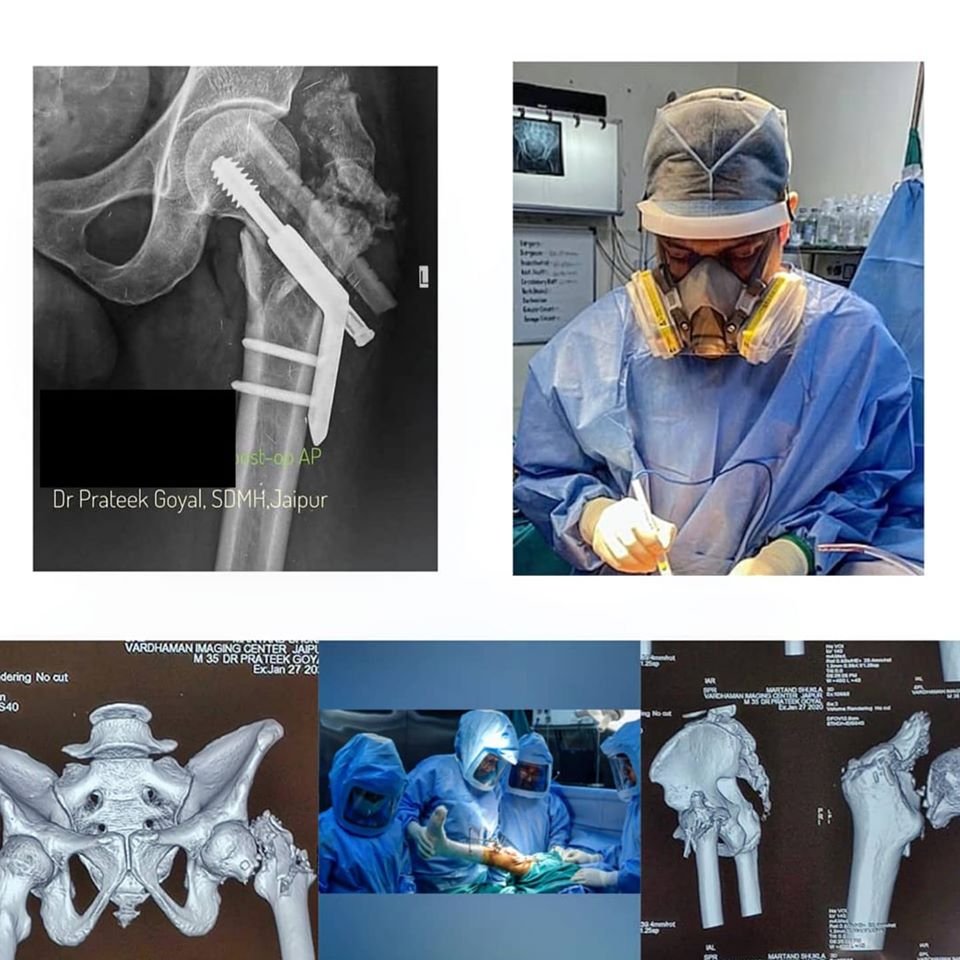A young 25 yrs old patient sustained severe and multiple injuries in a road traffic accident.
Despite head injuries and chest injuries, He had life-threatening Pelvic bone fracture diastasis with sacrailiac joint and sacrum fractures. He Had femur fracture also on rt side. Presence of urinary bladder injury further aggravated the pelvic injury. There was profuse internal bleed led to haemodynamic shock.
After ensuring initial ABC and haemodynamic management patient survived and became stable within few days.
The presence of urinary bladder injury, scrotal injury, and internal degloving in the Pubic region preluded any internal surgical exploration and instrumentation in the injured area as it leads to high chances of infection. His pelvis was wide open at symphysis in open book fashion which required proper reduction to prevent future disability.
Thanks to intensivists And a Urologist’s at SDMH who resuscitated him primarily and treated his bladder injury with precision.
We had to address his pelvic displacement and SI joint problem simultaneously to reform his pelvic ring structure.
We could successfully fix the whole injury through the minimally invasive and newer modality of INTERNAL EXTERNAL FIXATOR (INFIX) For symphysis and percutaneous screw fixation for his sacroiliac joint injury.
Earlier these were fixed through an external fixator where the whole bulky apparatus lies outside the body in front of the abdomen.
It is unsightly, cumbersome, and associated with many complications. The patient can not sit and not even turn in bed for a period of 2-3 months. This newer procedure addresses all these problems. The implant is all inside body and the patient can be mobilized the next day.
This is a newer procedure and we can say with pride that we are lucky enough to execute this FIRST TIME IN OUR STATE.
We used Implant and instruments used for spinal surgeries and I thank Dr. D P Sharma for providing us with those.
These injuries if not complicated with soft tissue and other systemic injuries are treated with internal symphysis plating which is already being done in our dept since past many years.
He also had rt side femur fracture which was fixed with a nail as a routine procedure after pelvic fixation.
Once again we thank u all for all the love and support. Please continue to do so in the future and forever 🙏🏻😀.





